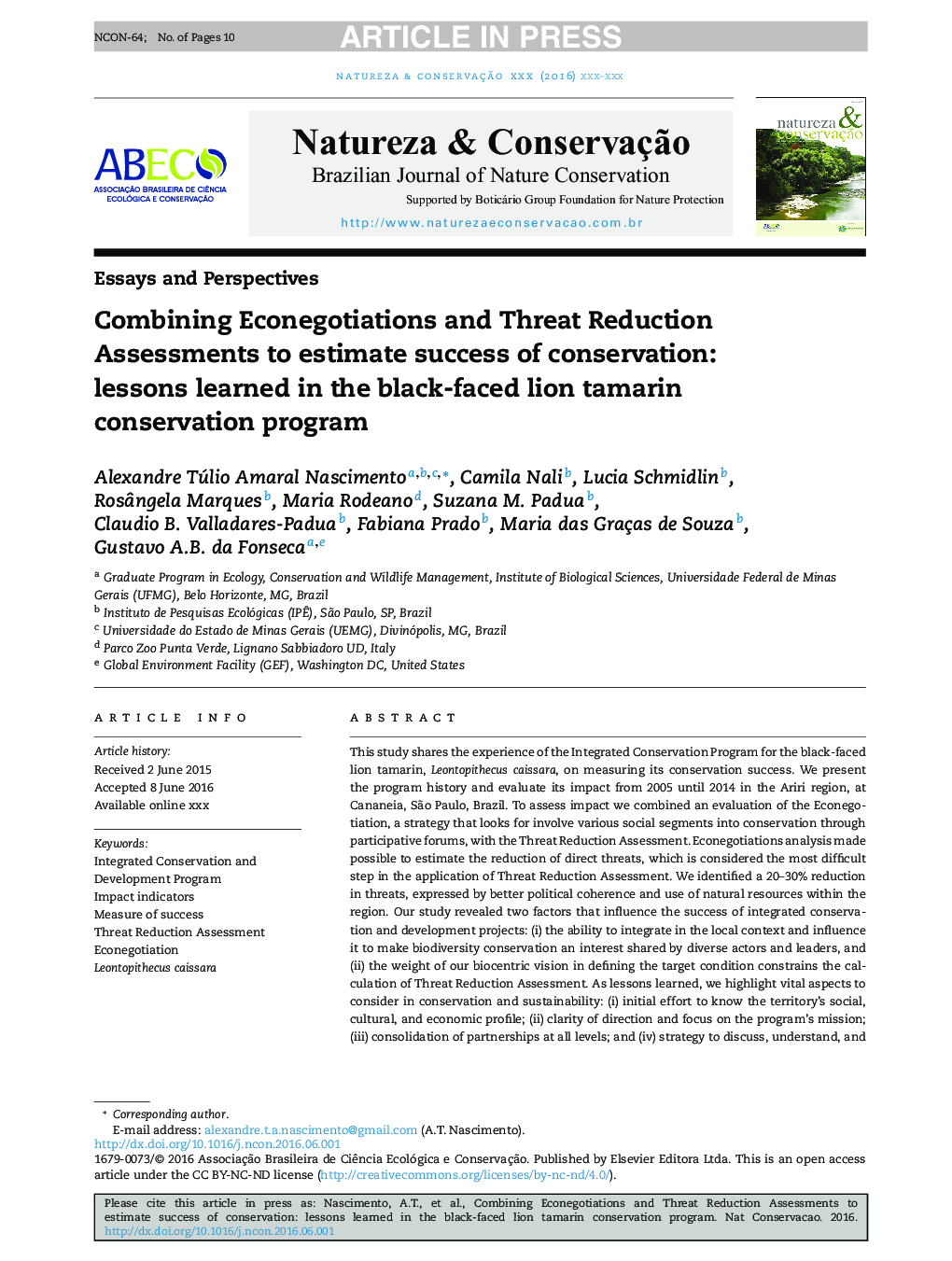| Article ID | Journal | Published Year | Pages | File Type |
|---|---|---|---|---|
| 8849444 | Natureza & Conservação | 2016 | 10 Pages |
Abstract
This study shares the experience of the Integrated Conservation Program for the black-faced lion tamarin, Leontopithecus caissara, on measuring its conservation success. We present the program history and evaluate its impact from 2005 until 2014 in the Ariri region, at Cananeia, São Paulo, Brazil. To assess impact we combined an evaluation of the Econegotiation, a strategy that looks for involve various social segments into conservation through participative forums, with the Threat Reduction Assessment. Econegotiations analysis made possible to estimate the reduction of direct threats, which is considered the most difficult step in the application of Threat Reduction Assessment. We identified a 20-30% reduction in threats, expressed by better political coherence and use of natural resources within the region. Our study revealed two factors that influence the success of integrated conservation and development projects: (i) the ability to integrate in the local context and influence it to make biodiversity conservation an interest shared by diverse actors and leaders, and (ii) the weight of our biocentric vision in defining the target condition constrains the calculation of Threat Reduction Assessment. As lessons learned, we highlight vital aspects to consider in conservation and sustainability: (i) initial effort to know the territory's social, cultural, and economic profile; (ii) clarity of direction and focus on the program's mission; (iii) consolidation of partnerships at all levels; and (iv) strategy to discuss, understand, and overcome conflicts, such as Econegotiations in the black-faced lion tamarin program, can act on critical threats and identify approaches and partnerships to reduce them.
Keywords
Related Topics
Life Sciences
Agricultural and Biological Sciences
Ecology, Evolution, Behavior and Systematics
Authors
Alexandre Túlio Amaral Nascimento, Camila Nali, Lucia Schmidlin, Rosângela Marques, Maria Rodeano, Suzana M. Padua, Claudio B. Valladares-Padua, Fabiana Prado, Maria das Graças de Souza, Gustavo A.B. da Fonseca,
